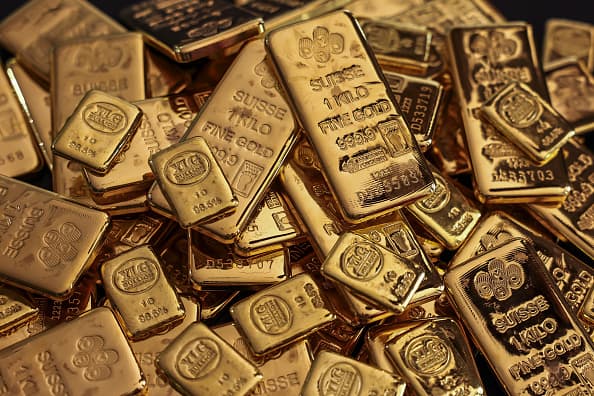
Geopolitical and structural factors have put gold on track to reach $2,600 an ounce within a year, according to a market veteran.
The precious metal has set consecutive record highs this year, including the latest on Thursday when the spot gold price topped $2,300 before retreating slightly. Early Friday, it was trading at about $2,278 an ounce.
The reasons behind its rise — and how far it could rise in the near to medium term — are hot topics among investors, especially as stock market gains remain strong.
Jörg Kenner, chief investment officer at Swiss Asia Capital, told CNBC's “Street Signs Asia” on Wednesday that his analysis of gold's futures curve “looks great.”
“If you look at your one-year forward curve, it's about 26 [$2,600]. I think we might be too fast when we get to 23 [$2,300] “Outside the country, there is a lot of pent-up demand,” he said.
He added that the collapse of inventory in the gold market puts “a lot of derivative structures at risk.”
“It probably puts a lot of structures in the market that deal with gold at risk as well, because [traders] May not be able to cover [their short positions]. And if you say 26 for me is just a curve forward, then if we get a short squeeze the numbers will go up a lot.”
A short squeeze occurs when the price of an asset rises sharply and holders of short positions – who were betting that prices would fall – are forced to buy the asset to prevent further losses, usually causing the price to rise further.
Kenner also cited geopolitics, the shift to a “multipolar world,” and changing international trade structures as reasons for his bullish sentiment on the gold price. The other reason, he added, is that governments are “printing money as if there is no tomorrow.”
Gold is usually seen as a so-called safe haven asset and also as a potential hedge against inflation.
Many analysts have cited geopolitics as the basis for a medium-term bullish case for gold, amid the wars in Gaza and Ukraine, the upcoming US elections and the possibility of recession in major economies. Another commonly cited factor is the possibility of the US Federal Reserve cutting interest rates, three of which are expected this year. Lower borrowing costs tend to increase gold's appeal as investors shift away from fixed-income assets such as bonds.
“We have a huge influx of precious metals leaving the West,” he said, adding that there was a “real shift” towards growing precious metal demand in Asia and the BRICS countries more broadly.
Chinese investors and families showed Increased demand for gold In 2023, according to the World Gold Council, the country's real estate market remains in turmoil and stock markets decline.
Central banks also increased their gold reserves over the past year, which supported prices.




More Stories
JPMorgan expects the Fed to cut its benchmark interest rate by 100 basis points this year
Shares of AI chip giant Nvidia fall despite record $30 billion in sales
Nasdaq falls as investors await Nvidia earnings